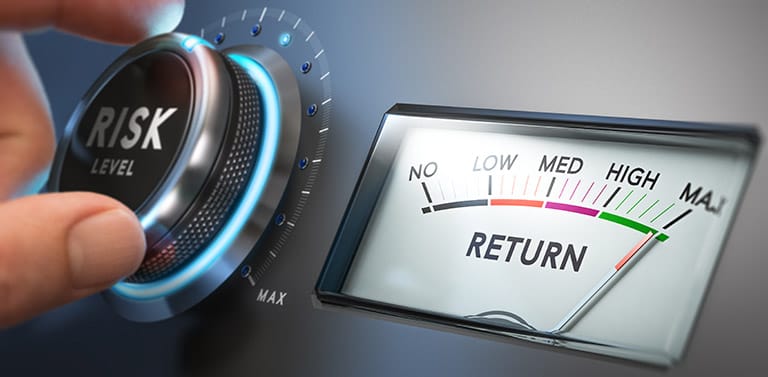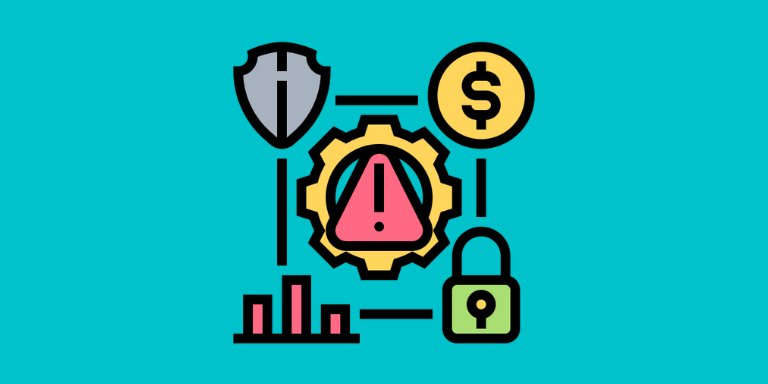Businesses thrive in risky environments. Organizations must remain vigilant of impending threats to avoid major impacts on their operations. Strategic, financial, cybersecurity, and compliance risks can have devastating effects on small or large organizations. For instance, 48% of small and medium businesses claim that a major cybersecurity threat can break their businesses.

A robust risk management process enables your organization to identify, evaluate, track, and prevent major risks within your business environment. However, effective risk management doesn’t have to be complicated or resource-intensive. With little understanding of the structure, business environment, and possible risks, a simple five-step risk management process can be rewarding.
Table of Contents
What is Risk Management?
Risk management is a continuous process for identifying, analyzing, evaluating, and controlling threats to your business. An appropriate risk management plan braces your business for uncertainties and triggers a prompt response proactively.
Organizations respond differently to threats depending on the business environment, size, and nature of the risk. There are four types of risk management you can implement when you incur risks. While they may not be effective for every threat, they are the essential starting points to help determine the most appropriate technique. Although the choice of risk management is sometimes clear, it’s important to assess different types to determine the most effective for your business.
- Risk avoidance. Entails withdrawing from a possibly risky situation.
- Risk transfer. Sharing your risk to reduce its impact on business
- Risk retention. Some risks are accepted and accounted for, since it’s virtually impossible to avoid or transfer all risks.
- Risk reduction. Entails keeping risks at manageable levels.
Why Do Businesses Need to Incorporate Risk Management?
Every business in any environment takes risks — no business can thrive in a risk-free environment. However, you must manage your risks effectively to minimize the chances of negative impacts on your business. Therefore, you need strong risk management to prevent catastrophic results.
Reduce Uncertainties
Business uncertainties can harm a business. Risk management allows business management to access a company’s internal and external composition and how to protect them from internal or external threats. Knowing how to determine when your business may be impacted is critical.
Protect Your Brand Image
Workplace threats can damage a company’s brand image, leading to negative publicity. For instance, in 2013, a coal company, AGL Energy, experienced a coal seam gas protest regarding its hydraulic fracking process in Australia. Consequently, the company was forced to suspend the development of 66 coal gas wells in Sidney.
A proper risk management plan informs stakeholders about the company’s responsibility, resourcefulness, and accountability for all business operations. As a result, customers feel confident in the business’s professionalism, while employees improve their confidence in their safety.
Protect Organizational Resources
A risk management plan allows organizations to prioritize important risks. It allows businesses to assess all possible risks and rank them based on their impact on business continuity.
The Five-Step Process for Risk Management
Five critical steps of a risk management process are highlighted below:
Risk Identification
A risk management process begins with the identification of all possible risks a business is exposed to. Identifying and recording risks makes them visible to all stakeholders. Revealing this vital information enlightens employees and management on each identified risk. The possible risks may include:
- Environmental risks
- Market risk
- Legal risks
- Regulatory risks
Risk Assessment
Risk assessment entails determining the scope of identified risks. Identifying the number of business factors that may be affected by identified risks enables organizations to assess the severity and seriousness of the risk.

Some risks may bring the whole business to a standstill, while others may only have minor inconveniences. An effective risk management solution maps a risk management framework for evaluating business risks.
Risk Mitigation
Risk mitigation entails developing a plan to minimize the likelihood of threat occurrence. While it is impossible to establish a mitigation plan for each risk, the review allows you to determine the most important risks and mitigate them first.
Start with the risk you deem most important in your assessment. Then develop a mitigation plan identifying each risk and devise a strategic plan outlining mitigation steps.
Risk Treatment
Once threats have been analyzed and a plan put in place, it’s now time for action.
Each risk identified and analyzed needs to be eliminated or controlled. If you opt for manual risk treatment, all stakeholders need to discuss the issues and the approach required. A study shows that only a small percentage of businesses have security teams to identify and mitigate risks. Therefore, having a risk management platform is critical.
Risk Monitoring
Now that you’ve identified, evaluated, and developed a mitigation plan for each risk, you need to monitor the occurrence possibility and your plan’s effectiveness to the risks.
Risk monitoring is continuous throughout the risk management process. Business managers may identify some risks, such as environmental and market risks, that are impossible to do away with. Therefore, such risks must be constantly monitored and reviewed to enhance the effectiveness of the mitigation process.
